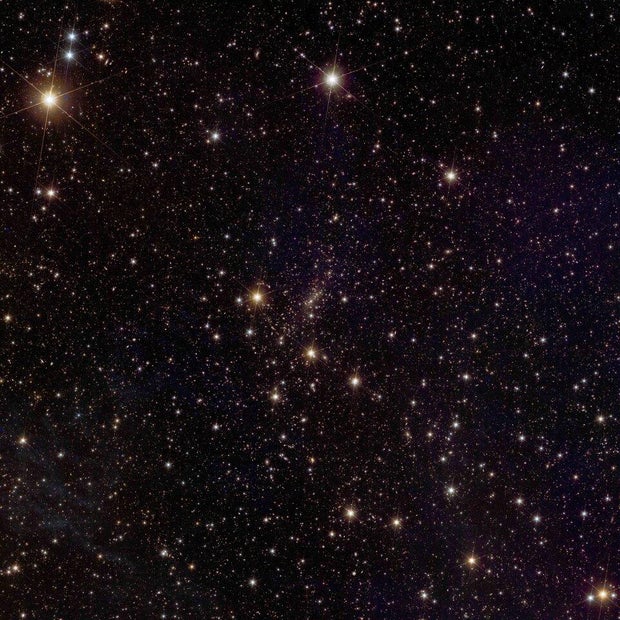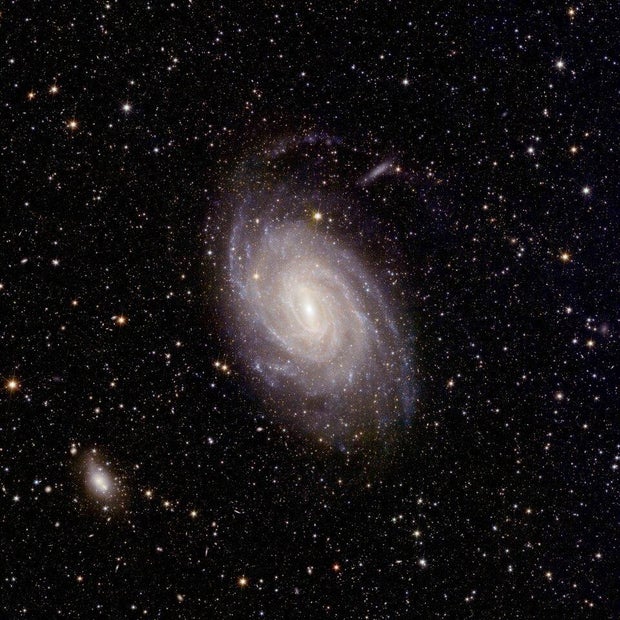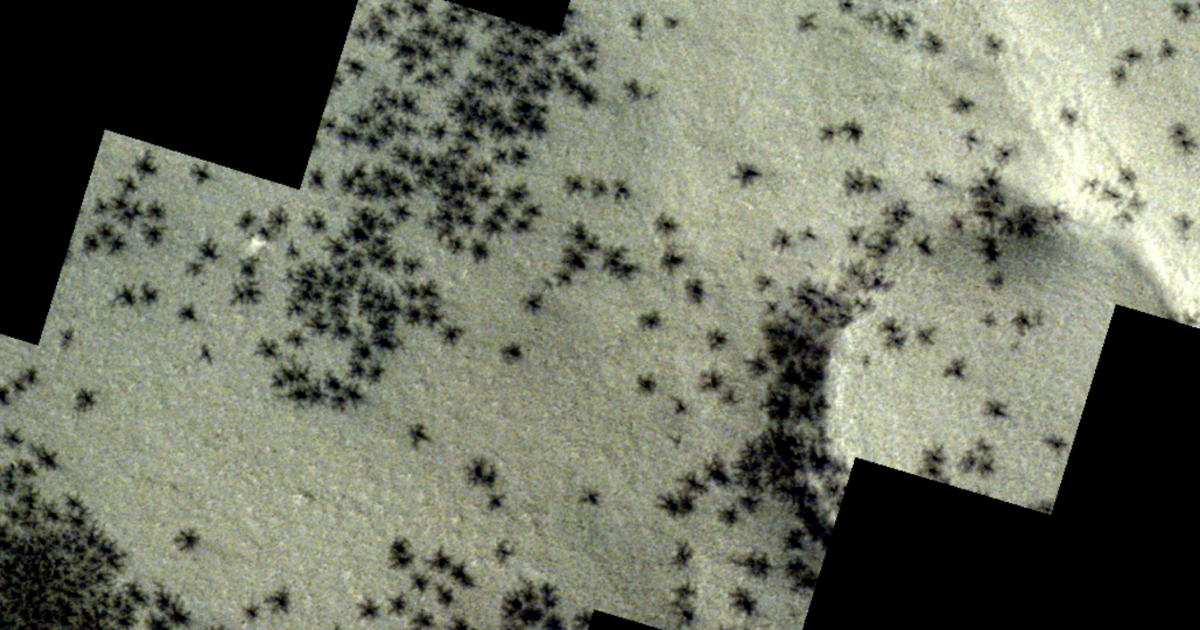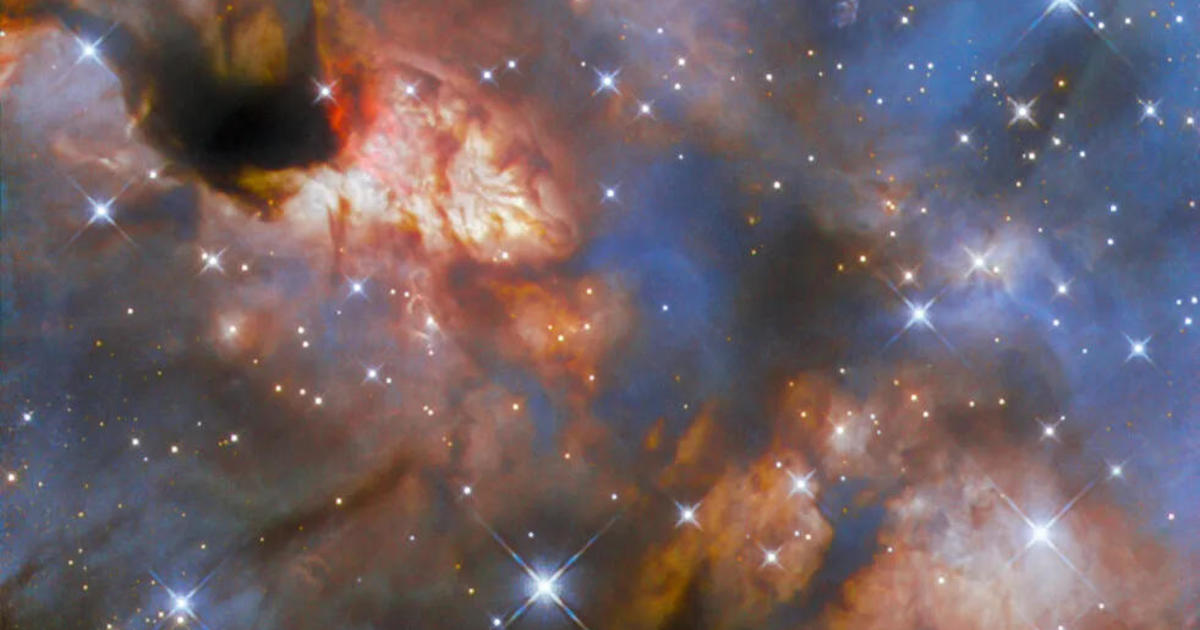CBS News
Euclid space telescope captures dazzling new images of the cosmos: “Never seen anything like it”

A mind-boggling number of shining galaxies, a purple and orange star nursery and a spiral galaxy similar to our Milky Way: new images were revealed from Europe’s Euclid space telescope on Thursday.
It is the second set of images released by the European Space Agency since Euclid launched last year on the first-ever mission to investigate the mysteries of dark matter and dark energy.
“The never-before-seen images demonstrate Euclid’s ability to unravel the secrets of the cosmos and enable scientists to hunt for rogue planets, use lensed galaxies to study mysterious matter, and explore the evolution of the universe,” the European Space Agency said in a statement.
Scientific data from Euclid was also published for the first time in the six-year mission, which aims to use its wide view to chart two billion galaxies across a third of the sky.
Euclid project scientist Rene Laureijs told AFP that he was “personally most excited” about the image of a massive cluster of galaxies called Abell 2390. The image of the cluster, which is 2.7 billion light years away from Earth, encompasses more than 50,000 galaxies.
ESA
Just one galaxy — such as our own — can be home to hundreds of billions or even trillions of stars, each of which could be bigger than the Sun.
In Abell 2390, Euclid was able to detect the faint light of “orphan stars” drifting between galaxy clusters, said Jean-Charles Cuillandre, a French scientist working on Euclid.
These stars are ejected from the galaxies, “creating a kind of cloud which surrounds the entire cluster,” Cuillandre told AFP.
According to astronomers, this strange phenomenon points towards the presence of dark matter between the galaxies.
Dark matter and dark energy are thought to make up 95 percent of the universe — but we know almost nothing about them.
Euclid also captured the deepest-ever image of the Messier 78, a nursery where stars are born 1,300 light years from Earth in the Orion constellation.
ESA
Stars are still in the process of forming in the bluish centre of the image. After gestating for millions of years, they emerge from the purple and orange clouds at the bottom of the image. “Bright things are trying to come out,” said Cuillandre.
Laureijs emphasised that “only Euclid can show this in one shot.”
That is because Euclid has a very wide field view, in contrast to far-seeing fellow space telescope the James Webb, its neighbor at a stable hovering spot 9.3 million miles from Earth.
Another image, of the huge galaxy cluster Abell 2764, depicts a black expanse in which one yellow star stands out.
Cuillandre admitted this was the result of an error in pointing the telescope. But he said the image demonstrated “Euclid’s absolutely unique ability to concentrate light,” because it was still able to pick up very faint objects next to the bright star.
Euclid’s image of the young Dorado cluster contained a surprise. Though the cluster was already well studied, Euclid discovered a never-before-seen dwarf galaxy, the scientists said.
“I’ve never seen anything like it,” Cuillandre said.
In the fifth new image, the spiral galaxy NGC 6744 — which bears a striking resemblance to the Milky Way — fans out against a backdrop of shining stars.
ESA
It is still early days for the mission, and the five new images were captured in just one day.
In the years ahead, scientists plan to sift through Euclid’s data in the hopes of spotting all manner of celestial bodies such as “rogue” planets, which float freely through the universe unconnected to a star.
But researchers have already been analysing Euclid’s first batch of images, which were released in November.
In one of 10 pre-print studies published on Thursday, scientists looked into the faint light from orphan stars in the Perseus galaxy cluster.
These lost stars “are now trapped in the gravity of the dark matter,” Laureijs said.
This remains only “indirect detection of dark matter,” he emphasized, adding that it was too early “to say something about dark energy.”
An image released last year showed a spectacular wide-angle view of Perseus, revealing at least 1,000 gravitationally-bound galaxies with another 100,000 or so sprinkled across the more distant background — many of them never before seen.
The mission has not been entirely smooth sailing.
In March, a delicate operation successfully melted a thin layer that had been slowing clouding the telescope’s sight by warming one of the telescope’s mirrors.
There are signs that the ice is building up again, Laureijs said, adding that the team has time to investigate what to do next.
Launched from Cape Canaveral on July 1, 2023 atop a SpaceX Falcon 9 rocket, the $1.5 billion Euclid is stationed about a million miles from Earth on the far side of the moon’s orbit.
Over the course of its six-year mission, the observatory will image the entire sky around the Milky Way, monitoring galaxies and galaxy clusters dating back 10 billion years.
“The images and associated science findings are impressively diverse in terms of the objects and distances observed. They include a variety of science applications, and yet represent a mere 24 hours of observations. They give just a hint of what Euclid can do,” Valeria Pettorino, ESA’s Euclid Project Scientist, said in a statement Thursday. “We are looking forward to six more years of data to come!”
William Harwood contributed to this report.
CBS News
“Sandwiches of History”: Resurrecting sandwich recipes that time forgot

Barry Enderwick is eating his way through history, one sandwich at a time. Every day from his home in San Jose, California, Enderwick posts a cooking video from a recipe that time forgot. From the 1905 British book “Salads, Sandwiches and Savouries,” Enderwick prepared the New York Sandwich.
The recipe called for 24 oysters, minced and mixed with mayonnaise, seasoned with lemon juice and pepper, and spread over buttered day-old French bread.
Rescuing recipes from the dustbin of history doesn’t always lead to culinary success. Sampling his New York Sandwich, Enderwick decried it as “a textural wasteland. No, thank you.” Into the trash bin it went!
But Enderwick’s efforts have yielded his own cookbook, a collection of some of the strangest – and sometimes unexpectedly delicious – historical recipes you’ve never heard of.
Harvard Common Press
He even has a traveling stage show: “Sandwiches of History Live.”
From the condiments to the sliced bread, this former Netflix executive has become something of a sandwich celebrity. “You can put just about anything in-between two slices of bread,” he said. “And it’s portable! In general, a sandwich is pretty easy fare. And so, they just have universal appeal.”
Though the sandwich gets its name famously from the Fourth Earl of Sandwich, the earliest sandwich Enderwick has eaten dates from 200 B.C.E. China, a seared beef sandwich called Rou Jia Mo.
He declared it delicious. “Between the onions, and all those spices and the soy sauce … oh my God! Oh man, this is so good!”
While Elvis was famous for his peanut butter and banana concoction, Enderwick says there’s another celebrity who should be more famous for his sandwich: Gene Kelly, who he says had “the greatest man sandwich in the world, which was basically mashed potatoes on bread. And it was delicious.”
Whether it’s a peanut and sardine sandwich (from “Blondie’s Cook Book” from 1947), or the parmesian radish sandwich (from 1909’s “The Up-To-Date Sandwich Book”), Enderwick tries to get a taste of who we were – good or gross – one recipe at a time.
RECIPE: A sophisticated club sandwich
Blogger Barry Enderwick, of Sandwiches of History, offers “Sunday Morning” viewers a 1958 recipe for a club sandwich that, he says, shouldn’t work, but actually does, really well!
MORE: “Sunday Morning” 2024 “Food Issue” recipe index
Delicious menu suggestions from top chefs, cookbook authors, food writers, restaurateurs, and the editors of Food & Wine magazine.
For more info:
Story produced by Anthony Laudato. Editor: Chad Cardin.
CBS News
The cream of the crop in butter

Watch CBS News
Be the first to know
Get browser notifications for breaking news, live events, and exclusive reporting.
CBS News
Baking an ancient bread in Tennessee

Watch CBS News
Be the first to know
Get browser notifications for breaking news, live events, and exclusive reporting.










